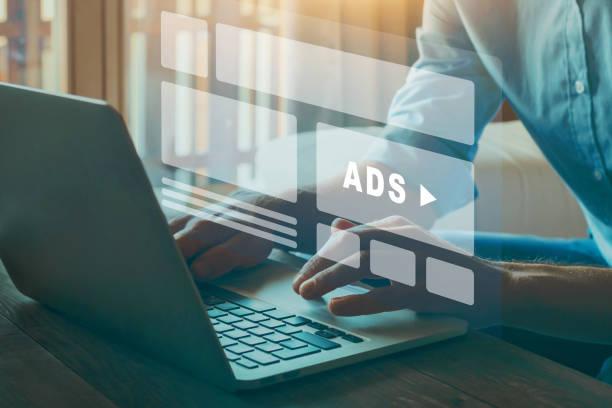Are you tired of seeing ads that don’t relate to you at all? Well, you might be interested in knowing more about native ads. In this article, we’ll talk about what native advertising is, how it works, what native ads look like, and which channels they are used in.
We’ll also discuss who benefits from native advertising, how to choose the right platform, which native units are best for you, and native advertising opportunities. So, sit tight and let’s get started!
What Is Native Advertising?
Native advertising is a type of paid media that matches the form and function of the platform on which it appears. In other words, native ads are designed to look and feel like part of the content around them.
Native advertising is different from traditional display ads that are typically banner or pop-up ads that stand out from the rest of the content.
How do Native Ads Work?
Native ads are designed to blend in with the surrounding content. They are created to look like a natural part of the page, which means they are less likely to be ignored or blocked by ad-blocking software.
Also, they are usually sponsored content that is meant to be informative or entertaining to the user , while also promoting a product or service.
Which Ads are Native and What Do They Look Like?
Native ads can come in many different formats, including articles, videos, sponsored posts on social media, and promoted listings on e-commerce sites. They are designed to match the look and feel of the site on which they appear.
For example, an article on a news site might have a sponsored article that looks and reads like the other articles on the site.
Native Advertising Channels
Native advertising can be used on several different channels, including search, social, and the open web.
Search
Native search ads appear at the top of search engine results pages and are designed to look like organic search results. They can include a headline, a description, and a link to the advertiser’s website.
Search engine’s native advertising involves placing sponsored content at the top of search engine results pages. This can be a highly effective way to reach users who are actively looking for products or services related to your business.
When creating search engine native ads, it’s important to choose the right keywords and ad copy that will resonate with your target audience. You’ll also want to monitor your campaigns closely to ensure that you’re getting a good return on your investment.
Social
Native ads on social media platforms blend in with the organic content and can appear in users’ feeds as sponsored posts. They can include text, images, and videos.
Social media native advertising involves placing sponsored content in users’ social media feeds. This can be a great way to reach users who are interested in your brand or product, but may not be actively searching for it.

When creating social media native ads, it’s important to consider the platform you’re advertising on and the preferences of your target audience. You’ll also want to create eye-catching visuals and compelling copy that will encourage users to engage with your brand.
Open Web
Native ads on the open web appear on publisher sites and can include articles, videos, or sponsored content. They are designed to match the look and feel of the site they appear on.
It involves placing sponsored content on third-party websites and content discovery networks. Which can be a great way to reach new audiences and build brand awareness, but also requires a good strategy.
When creating open web native ads, it’s important to choose the right content discovery platform and targeting options that will reach your desired audience.You’ll also want to create high-quality content that provides value to users and encourages them to engage with your brand.
Who Benefits from Native Advertising?
Native advertising benefits three main groups: advertisers, publishers, and users.
Advertisers
Advertisers benefit from native advertising because it allows them to promote their product or service in a way that is less intrusive than traditional display ads. Native ads are also more likely to be seen and clicked on, which can lead to higher conversion rates.
Native advertisements can be a highly effective way to engage users and encourage them to take action, whether that’s making a purchase, signing up for a newsletter, or downloading an app.
When creating native ads, advertisers should focus on creating high-quality content that provides value to users and aligns with their brand values.
Publishers
Publishers benefit from native advertising because it allows them to monetize their content without interrupting the user experience. Native ads are designed to blend in with the surrounding content, which means users are less likely to be annoyed by them.
They can provide a less intrusive and more engaging user experience than traditional display ads, which can lead to higher engagement rates and better user satisfaction.
When working with advertisers on native campaigns, publishers should ensure that the content aligns with their editorial standards and provides value to their audience.
Users
Users benefit from native advertising because it provides them with relevant and informative content that matches their interests. Native ads are designed to be less intrusive than traditional ads, which means users are less likely to ignore or block them.
How to Choose the Right Native Advertising Platform?
Choosing the right native advertising platform can be a daunting task, but there are some key factors to consider. Choosing the right content discovery platform can make all the difference in the success of your campaign.
With so many options available, it can be overwhelming to determine which platform is the best fit for your needs. To help make the process easier, here is a list of requirements to consider when choosing a content discovery platform:
Quality of network
The quality of the network is important when choosing a native advertising platform. A high-quality network will have a large number of reputable publishers and advertisers.
Tracking
Tracking is essential because it allows advertisers to see how their ads are performing. A good native advertising platform will provide detailed tracking and reporting tools.
Scale
Scale is important because it allows advertisers to reach a larger audience. A good native advertising platform will have a large number of publishers and a wide range of targeting options to help advertisers reach their desired audience.
Compatibility
Compatibility is crucial because it ensures that the native ads will look and function properly on the publisher’s site. A good native advertising platform will have a wide range of ad formats and be compatible with multiple platforms.
Targeting
Targeting is important because it allows advertisers to reach their desired audience with greater accuracy. A good native advertising platform will have advanced targeting options that allow advertisers to target based on demographics, interests, and behavior.
Service
Service is essential because it ensures that advertisers receive the support they need to create effective native ad campaigns. A good native advertising platform will offer a range of services, including ad design and optimization.
Bidding Models
Bidding models are important because they determine how advertisers pay for their native ads. The two main bidding models are cost-per-click (CPC) and cost-per-impression (CPM).
Auction Models
Auction models are necessary because they determine how native ads are served to users. The two main auction models are first-price auction and second-price auction.
What Native Units Are Best for You?
There are several different native units to choose from, including publisher homepage, mid-article, and below article.
Publisher Homepage
Native ads on publisher homepages are designed to catch the user’s attention as soon as they land on the site. They can be banner ads, promoted listings, or sponsored articles.
Mid-Article
Native ads in the middle of articles are designed to be informative and entertaining while also promoting a product or service. They can be articles, videos, or interactive content.
Below Article
Native ads below articles are designed to provide users with additional information related to the content they just read. They can be sponsored articles or promoted listings.
Native Advertising Opportunities
Native advertising presents a wide range of opportunities for advertisers and publishers alike. Advertisers can use native ads to promote their products or services in a way that is less intrusive than traditional display ads.

Publishers can use native ads to monetize their content without interrupting the user experience. Users can benefit from native ads by receiving relevant and informative content that matches their interests.
Conclusions
Native advertisements are a powerful tool that allows advertisers to promote their products or services in a way that is less intrusive than traditional display ads.
They are designed to look and feel like part of the content around them, making them less likely to be ignored or blocked by ad-blocking software, and not interrupt the user experience. So, they are beneficial to everyone, from publishers to the audience.
Native advertising can be used on several different channels, including search, social, and the open web. When choosing a native advertising platform, it is important to consider factors such as the quality of the network, tracking, scale, compatibility, targeting, service, and bidding models.
There are several different native units to choose from, including publisher homepage, mid-article, and below article. Native advertising presents a wide range of opportunities for advertisers and publishers alike, and users can benefit from receiving relevant and informative content that matches their interests.
So, what are you waiting for? Give native advertising a try today!
Related Posts You Might Like







